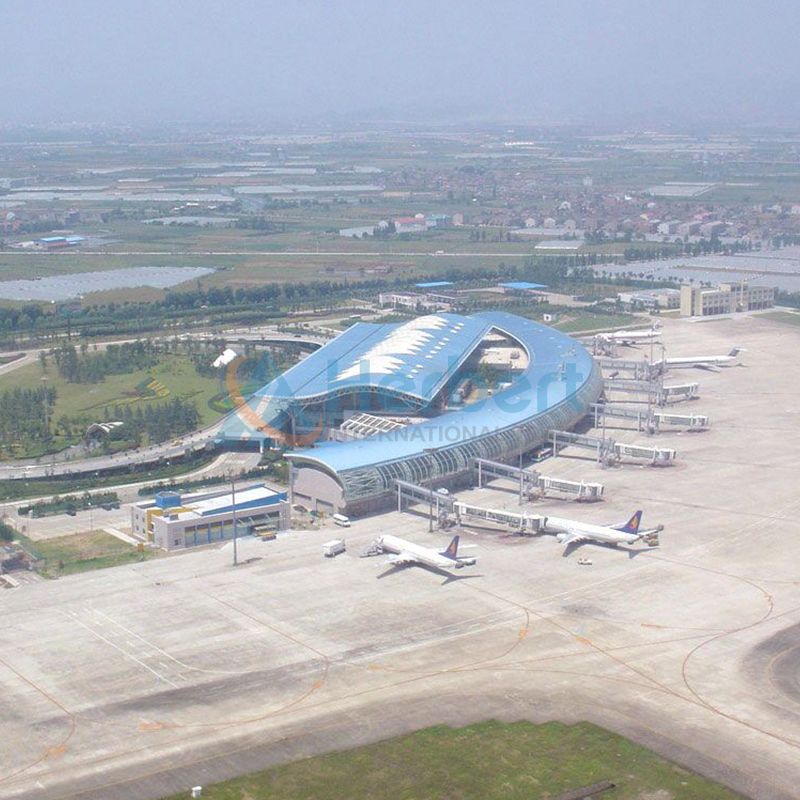Types of Curtain Wall Systems
Curtain wall systems are a prominent feature in contemporary architecture, serving both functional and aesthetic purposes. These non-structural exteriors consist of lightweight panels and glazing, creating a building's outer envelope. Curtain wall systems come in various types, each offering unique characteristics to suit different architectural designs and performance requirements. Here are some of the primary types of curtain wall systems:
Stick-Built Curtain Wall: This is one of the most traditional and commonly used types of curtain wall systems. In a stick-built curtain wall, components are fabricated and assembled on-site. Vertical and horizontal mullions (structural elements) are installed first, followed by the insertion of glass panels into the frame. This method allows for flexibility in design and is particularly cost-effective. However, it can be time-consuming to construct compared to other methods.
Unitized Curtain Wall: Unitized curtain wall systems are assembled in a factory, with entire sections of the curtain wall – including the frame, mullions, and glazing – pre-fabricated into large panels. These panels are then transported to the construction site and installed as complete units. Unitized systems offer a more streamlined construction process, reducing on-site labor and assembly time. They are often used in high-rise buildings and projects with tight schedules.
Semi-Unitized Curtain Wall: The semi-unitized system is a hybrid of stick-built and unitized methods. In this approach, some components are pre-fabricated, while others are assembled on-site. Typically, the mullions are pre-fabricated and transported as complete units, while the glazing and spandrel panels are installed separately. This approach combines the advantages of both stick-built and unitized systems.

Point-Supported Curtain Wall: Point-supported curtain wall systems are known for their minimal structural framework and the use of glass fins or spider fittings to hold the glazing panels in place. This design creates an almost entirely transparent façade, providing a unique and visually striking appearance. Point-supported systems are often used in modern and avant-garde architecture, such as glass pavilions and upscale retail spaces.
Structural Glazing System: In structural glazing systems, the glass is bonded to the structural frame using high-strength silicone sealants or adhesives, eliminating the need for visible mullions. This results in a sleek and uninterrupted glass surface that offers unobstructed views and a seamless appearance. Structural glazing systems are commonly used in high-end commercial and residential projects.
Mullion-Transom (Capped) Curtain Wall: Capped curtain wall systems are characterized by the use of visible, non-structural mullions and transoms that frame the individual glass panels. These systems provide a more traditional and classic appearance, with the framing elements offering an additional layer of weather protection. They are commonly used in institutional and commercial buildings.
Customized Curtain Wall: Customized curtain walls are designed to meet the specific needs of a project, often incorporating unique shapes, materials, and features. These systems offer the most design flexibility but can also be the most labor-intensive and costly to produce. They are commonly used in signature buildings and architectural landmarks.
Double Skin Curtain Wall: Double skin curtain walls consist of two layers of glazed façades, creating a cavity between them. This cavity can be used to enhance thermal insulation, ventilation, or soundproofing. Double skin curtain walls are energy-efficient and often utilized in sustainable and green building projects.
The choice of a curtain wall system depends on factors like architectural design, budget, construction schedule, climate conditions, and performance requirements. Each type of curtain wall system offers a unique set of advantages and challenges, making it important to carefully evaluate the specific needs of the project before selecting the most suitable option.



